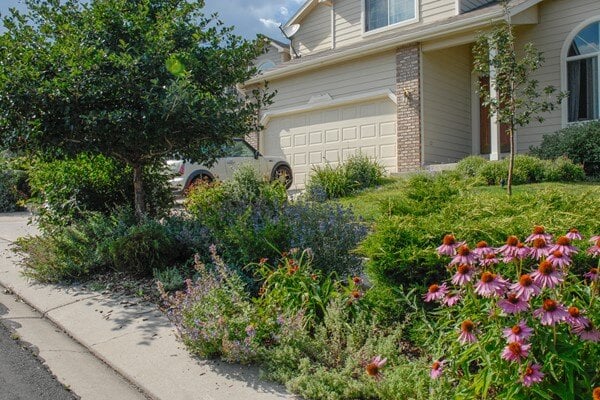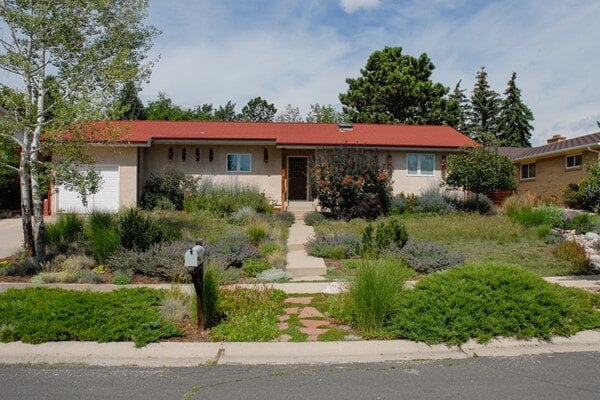Thornless Cockspur Hawthorn
An excellent choice for a small, deciduous tree, thornless cockspur hawthorn is a drought tolerant option with three-season interest.
Its branches grow horizontally into a broad shape. Clusters of white flowers appear in spring, followed by dark red berries. Throughout the growing season, it has rounded, glossy green leaves.
In fall, the leaves turn bright yellow to orange. This tree is easy to find for sale at nurseries.
.jpg)
.jpg)
.jpg)
.jpg)
.jpg)
.jpg)
.jpg)
.jpg)
.jpg)
Thornless Cockspur Hawthorn
An excellent choice for a small, deciduous tree, thornless cockspur hawthorn is a drought tolerant option with three-season interest.
Its branches grow horizontally into a broad shape. Clusters of white flowers appear in spring, followed by dark red berries. Throughout the growing season, it has rounded, glossy green leaves.
In fall, the leaves turn bright yellow to orange. This tree is easy to find for sale at nurseries.
Plant details
Botanic Name
Crataegus crus-galli var. inermis
Pronunciation
krah-TEE-gus KRUS GAL-ee
Mature Height
15 to 25 ft.
Mature Spread
15 to 20 ft.
Water usage
One Droplet: Water twice per month or less, once established.
Two Droplets: Water about once per week, once established.
Three Droplets: Water about twice per week, once established.
Flower Color
white
Bloom time
spring
Colorado Native
No
Natural Habitat
eastern and midwestern US
Light Requirements
sun
Cold Hardiness
USDA zones 4-8
Elevation Limit
hardy to 8,000 ft.
Performance
Thornless cockspur hawthorn performs well throughout Colorado Springs. There are two planted at the Water Wise Demonstration Garden that have proven to be trouble-free trees. They are drought-tolerant and resilient to Colorado's changing weather.
Make sure to plant this tree where the branches will have enough space to grow horizontally without creating an obstacle. Since its a small tree, it can be challenging to limb up the branches high enough to allow people to walk underneath it.
Maintenance
Prune when young to create a healthy, well-shaped specimen tree. No other maintenance required.
See in a landscape
It may surprise you, but this entire yard is xeriscape! The plants in this landscape are all well adapted to Colorado and grouped according to water need which makes the best use of water in the landscape. The turfgrass is a dwarf tall fescue and looks great with 2/3rds the water of traditional grass. A tip for large yards like this one is to plant in groups to create unity and interest and to choose larger xeric shrubs where possible to help reduce maintenance.
The owners of this landscape are in the process of shrinking the bluegrass and replacing it with plants better suited for Colorado. The front yard of this north Colorado Springs residence has been modified by renovating the parkway to feature a small tree, a couple shrubs and flowering perennials that give instant curb appeal. The backyard is in process with an end goal of shrinking the turfgrass area and creating large planting beds along the perimeter of the yard that will feature xeric plants. This is a great example of working in phases and thinking through the project a little bit at a time.
Xeriscape is a great opportunity to showcase plants with different colors and textures. This yard uses ornamental trees, evergreen shrubs, striking ornamental grasses and a native grass lawn to breathe life into a yard that used to be all Kentucky bluegrass. The parkway strip is home to the existing juniper that has been partnered with large maiden grasses and a pathway which accommodates foot traffic from the street parking. A native grass turf covers about half of the remaining yard with planting beds around the perimeter that feature low water perennials, grasses and groundcovers.



.jpeg)
.jpeg)
.jpeg)
.jpeg)
.jpeg)
.jpeg)
.jpeg)
.jpeg)
.jpeg)
.jpeg)